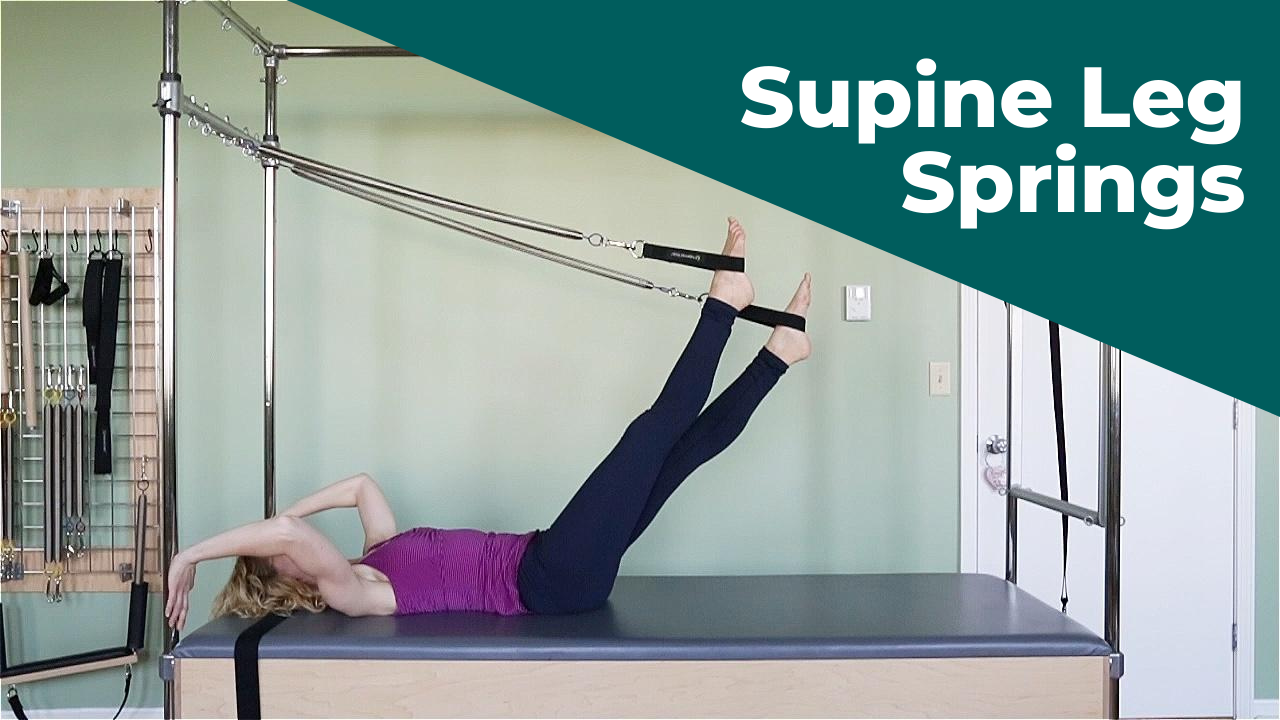How to Keep Lumbo-Pelvic Stability in Supine Leg Springs on the Trapeze Table
Oct 21, 2019
Supine Leg Springs is also called Leg Spring Series Supine or Feet in Straps. This series is a great way to improve hip mobility. It activates the hip extensors (glutes and hamstrings) which allow the hip flexors to release.
One of the most important factors to effectively strengthen your hip muscles is a neutral lumbo-pelvic alignment. All your hip muscles attach to the pelvis, so if you're pelvis is out of alignment the muscles that attach to it can't work the way they were designed to.
But it's very common for students to lose neutral pelvic alignment. This can mean hip hiking (shortening one waist), pelvic rotation (putting more weight on one buttock), or losing sagittal alignment (tucking the tailbone under, or arching the low back.)
That’s a lot of things that can go wrong! What are some simple ways to correct alignment? Try these tips:
- Let the pelvis be heavy on the table. Anchor the sacrum and tailbone down equally and keep equal weight on both buttocks.
- Allow the buttock muscles to lengthen as the spring lifts the leg.
- Reach your tailbone down and away.
- For Teachers: Hold the sides of your student’s pelvis and correct it into the neutral position.
- Self cue: Place your thumbs against your lowest front rib pair and your middle fingers onto your hip bones and measure the distance between the two fingers of each hand. Compare if they are even.
Related: The Cueing Cure: Dramatically Improve Your Verbal Cueing in 30-Days
Are you going to practice or teach Supine Leg Springs this week? What are your favorite tips for this exercise?
In the Pilates Encyclopedia, we look at every detail of Supine Leg Springs, from head to toe, to help you get the maximum benefit from this exercise.










